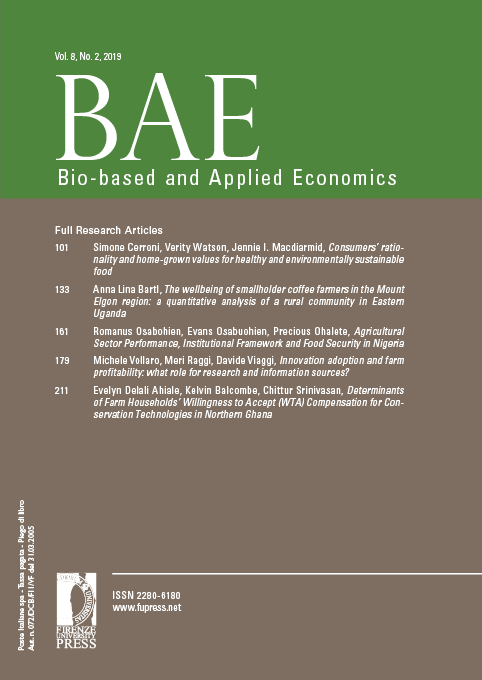Published 2020-05-20
Keywords
- Home-grown value,
- induced value,
- rationality,
- experimental auction,
- discrete choice experiment
How to Cite
Abstract
Consumers’ food choices often deviate from rationality. This paper explores whether deviations from rationality impact home-grown values elicited using either bid- or choice-based value elicitation techniques. The paper focuses on second-price Vickrey auctions and discrete choice experiments, which are widely used to value innovative private goods and the welfare benefits of policy interventions. The paper reports the results of an experiment that combines induced value and home-grown value elicitation procedures. Home-grown values are elicited for a public food policy. The experiment has two treatments that differ in the elicitation technique: second-price Vickrey auction and discrete choice experiment. For each technique, induced-value elicitation procedures are used to measure subjects’ deviations from rationality. Deviations from rationality are more likely in the second-price Vickrey auction. Subjects who behave irrationally have higher home-grown values than rational subjects in the second-price Vickrey auction. The impact of deviations from rationality is weaker in the discrete choice experiment.






